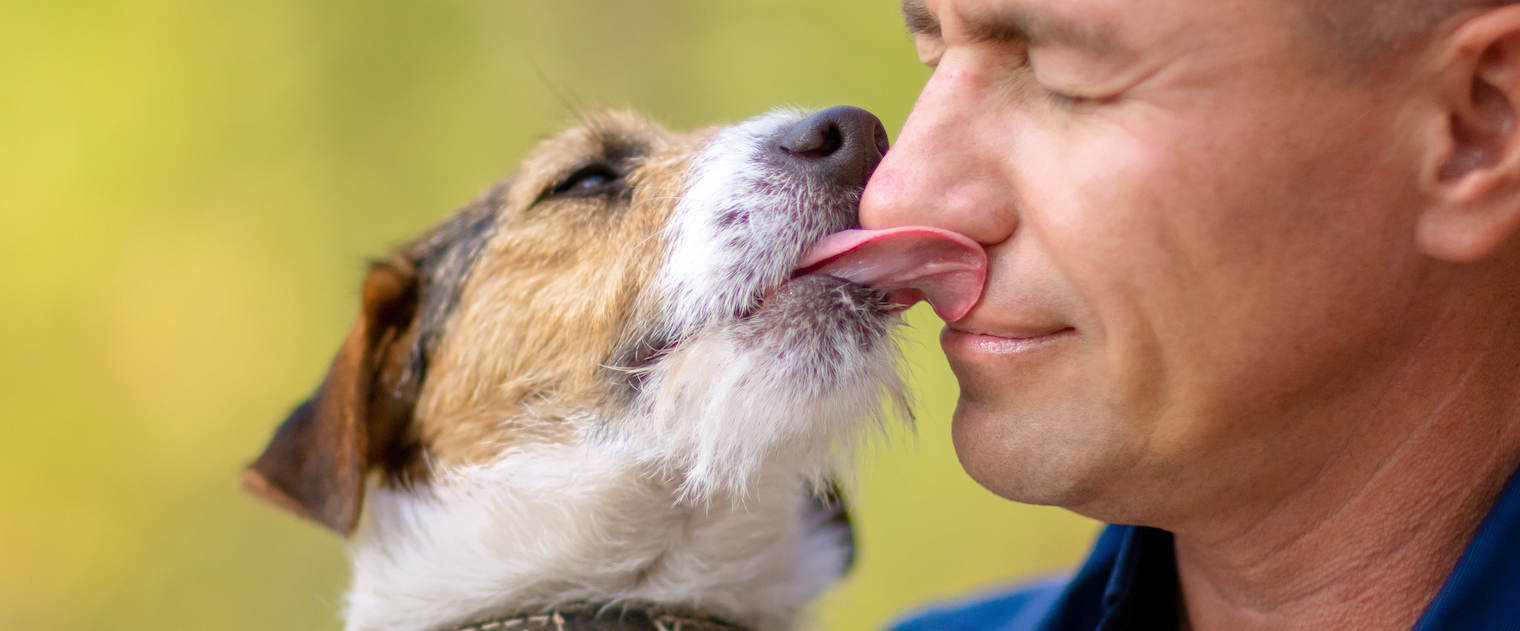Our dogs might be our best friends and beloved family members, but that doesn’t mean we always understand them. While some of their behaviors are pretty easy to interpret – tail wagging for happiness, scratching at the door to go outside – others can leave us wondering. This Valentine’s Day, as we think about the love we share with our dogs, its worth trying to understand better how they show us love.
What do dog licks mean?
A dog licking your face or hands certainly seems affectionate – but is it? The answer is both yes and no. Yes, licks often indicate affection because your dog has learned the behavior: you like or appreciate the licks and thus give your dog snuggles or praise in return. So to make you happy, the dog will lick more. Even more basic to dog behavior is that licking is often a way that puppies communicate to their mothers that they’re ready to eat. So a dog may lick you to indicate hunger, be treated with a dog biscuit, and thus learn that licks make for a happy owner who gives out food.
Socially, lower-status dogs in the pack would lick higher-status dogs, so your dog may also be showing his respect for you when kissing you. But sometimes it’s more basic than that – your dog might lick you simply because you taste or smell good.
In any case, if you like dog licks, then it’s perfectly fine to praise your dog for this social interaction. But if you don’t like them, you can easily train your dog that licking is not acceptable. As with any training, be consistent in how you react to licks so your dog understands the expected behavior.
Other ways dogs show affection
Dogs have plenty of other physical ways to showing you they love you – or if not love, then at least they feel comfortable around you and trust you. Some common dog signs of relaxed comfort include:
- Resting a head or paw on you
- Making long stretches in front of you, or rolling over on their backs
- Leaning against you
- Wagging their tails whenever they see you
- Making extended eye contact (this only applies to dogs you know well. Eye contact with unknown dogs could be a threat or sign of aggression).
Dogs may also show affection by doing a behavior you’ve taught them to do. Since dogs want to please you, they may repeat these behaviors even without being asked.
My dog doesn’t do any of this. Does she love me?
Dogs, like people, vary widely in how they show emotion and how social they are. One dog may love couch snuggles and face licks, while another dog may sit stoically on the other side of the room from you. Often the behavior varies by breed, with some breeds craving close interaction with humans more than others. This varied behavior does not necessarily indicate a difference in affection; it’s just different ways of showing love based on the dog’s personality. That said, if your dog has always acted one way and then changes, this could be a sign of a problem, and you should consider a visit with your veterinarian.



